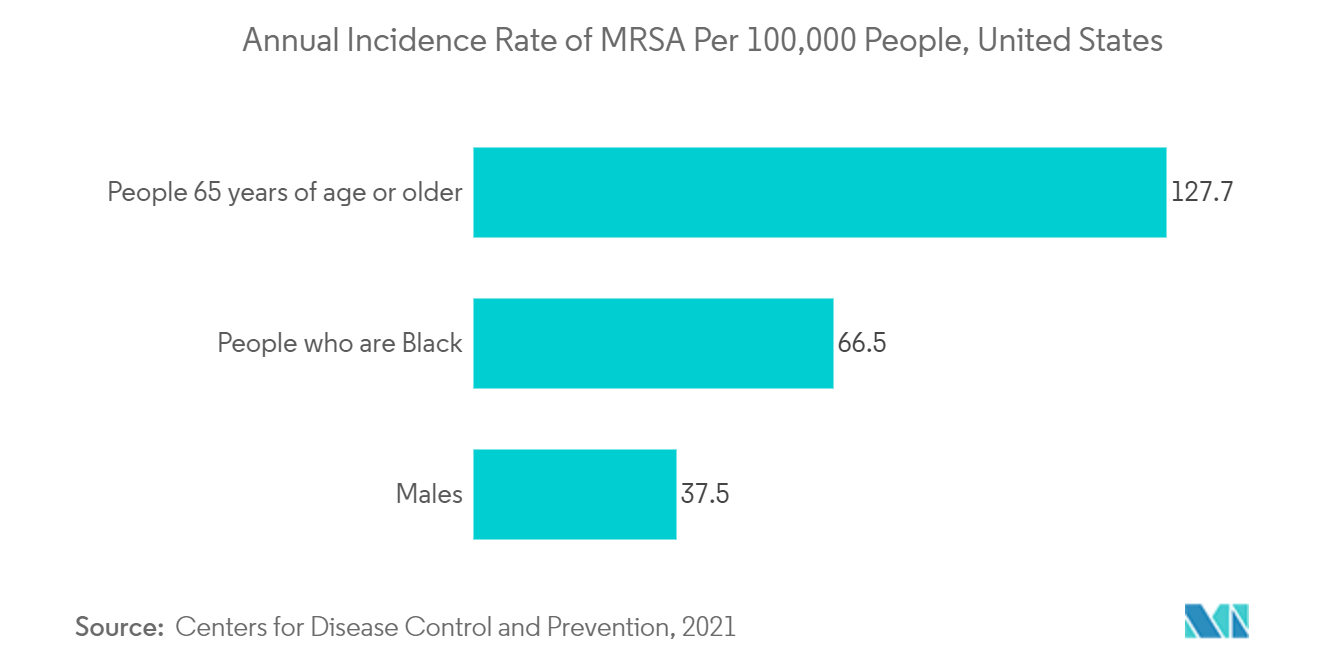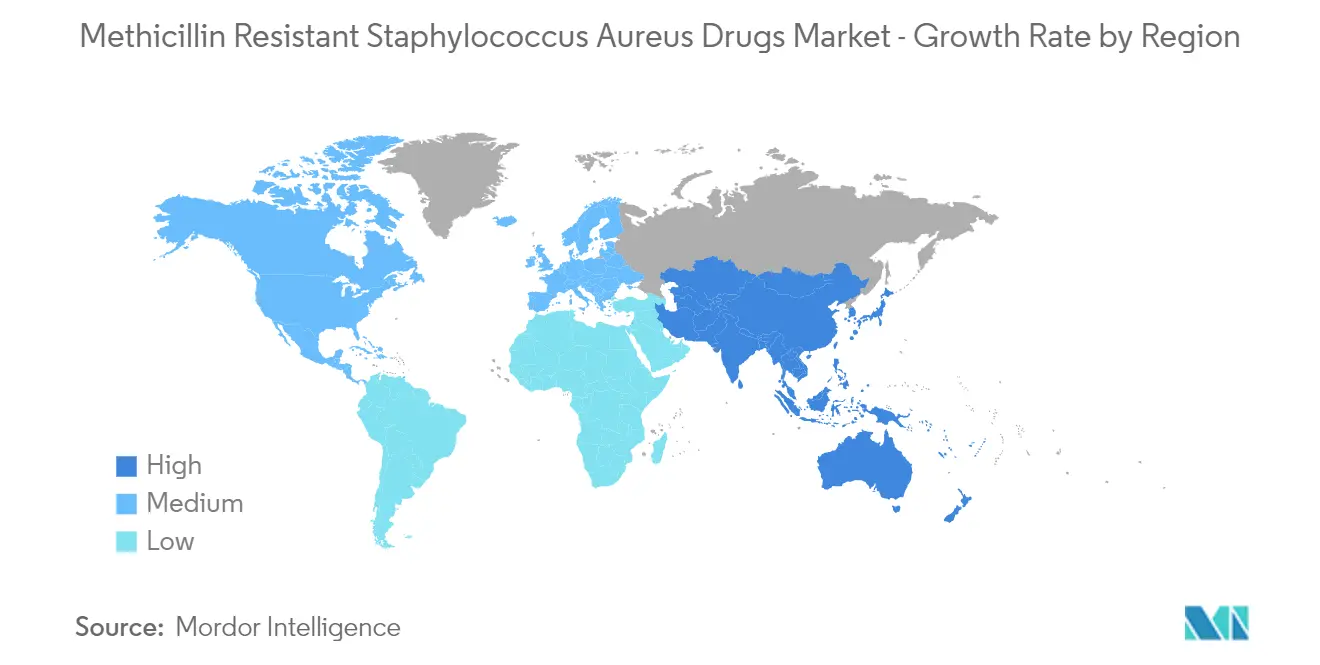Market Trends of Global Methicillin-resistant Staphylococcus Aureus Drugs Industry
This section covers the major market trends shaping the Methicillin Resistant Staphylococcus Aureus Drugs Market according to our research experts:
Lipopeptide Segment is Expected to Hold the Significant Market Share in the Market
The Lipopeptide segment accounts for the major market share owing to the novel antibiotic therapy introduced for MRSA. The therapy includes daptomycin, a lipopeptide class of drug, and linezolid, an oxazolidinone class of antibiotics. Drug-resistant and multidrug-resistant bacteria are becoming a serious public health concern. For instance, according to the study "Prevalence of Methicillin-Resistant Staphylococcus Aureus in a Tertiary Hospital in Nepal" published in the Journal of "Public Health Action" in November 2021, MRSA was found in 1,027 out of the 1,804 patients with S. aureus infection in Nepal. MRSA was shown to be susceptible to vancomycin (100%), linezolid (96%), doxycycline (96%), chloramphenicol (86%), and cotrimoxazole (70%) but resistant to erythromycin (68%), clindamycin (56%), gentamycin (58%), ciprofloxacin (92%), and ofloxacin (92%). MRSA prevalence was greater in outpatients and respiratory samples in 2019 but lower in blood samples. According to the study findings, more than half of individuals with S. aureus infection had MRSA that was resistant to routinely used antibiotics. Thus, the development of new antimicrobials is imperative, and rapid implementation of potential treatment is necessary. Therefore, it is expected to aid the segment's market growth in the studied period.
Moreover, as per the study "Efficacy of Newly Generated Short Antimicrobial Cationic Lipopeptides Against Methicillin-Resistant Staphylococcus Aureus (MRSA)" published in March 2020, the short cationic dialkyl lipopeptides (C10)2-KKKK-NH2 and (C12)2-KKKK-NH2 were tested in vitro and in vivo against clinical methicillin-susceptible S. aureus and MRSA strains. According to the findings, the effect of short lipopeptides in S. aureus was linked to significant morphological structural alterations and cell membrane disruption. The study revealed that both short cationic dialkyl lipopeptides have rapid bactericidal activity in the first 6 hours of treatment, hence, the short lipopeptides were found to be promising novel treatments for MRSA infections. As a result, it is anticipated to support the segment's market expansion over the study period.

North America Dominates the Market and Expected to do Same in the Forecast Period.
North America is expected to dominate the overall Methicillin-resistant Staphylococcus Aureus Drugs market over the forecast period. The factors propelling the market growth are the rising prevalence of MRSA infections and better healthcare infrastructure in the region. Moreover, the rise in government support along with the public health agency to treat MRSA infection in individuals is expected to fuel target market growth. For instance, in October 2020, United States Centers for Disease Control and Prevention (CDC) officials announced the "National Action Plan" to fight antibiotic-resistant infections. According to the CDC, antibiotic-resistant bacteria are responsible for an estimated 35,000 fatalities in the United States each year, and treating them costs the country's healthcare system USD 4.8 billion every year. To overcome this, the National Action Plan for Combating Antibiotic-Resistant Bacteria gives the United States government five years to speed up efforts to prevent the spread of antibiotic-resistant bacteria. In addition to this, the Centers for Disease Control and Prevention (CDC) has set aside more than USD 150 million per year to combat antibiotic resistance problems in all 50 states.
Therefore, such government initiatives along with the rising burden of MRSA infection among the population are anticipated to aid the target market growth over the forecasted period.

